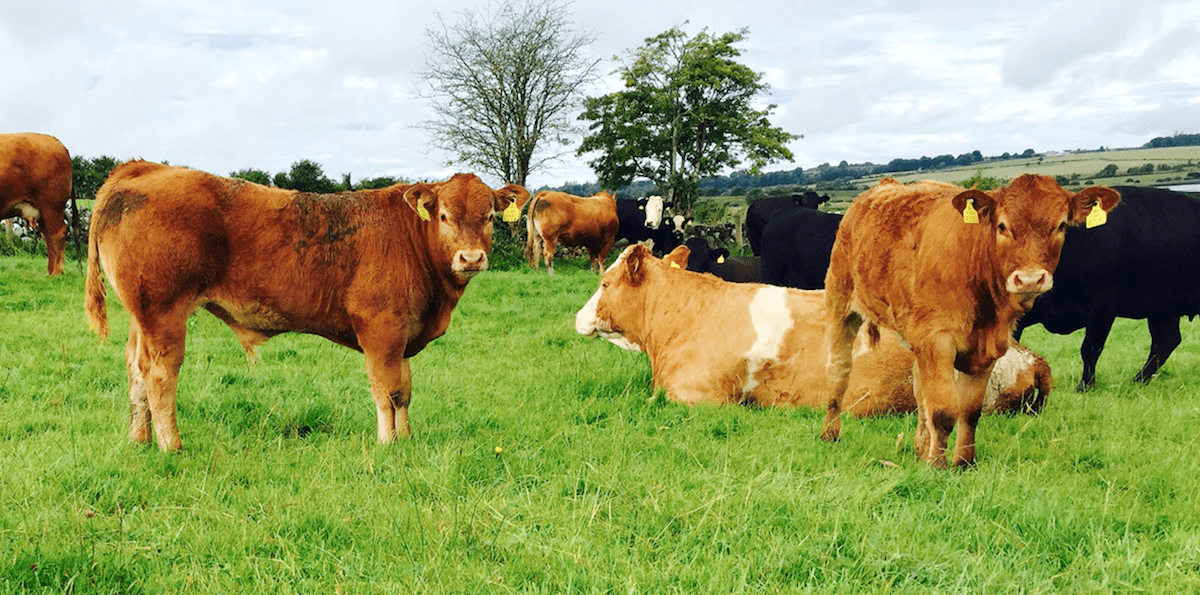2017 has seen a difference in the performance levels of beef finishing farms and suckler farming enterprises.
On cattle finishing farms, higher production levels and higher outputs has led to increased margins. On suckler farms, lower direct costs and a stable output value of cattle has led to a small improvement – albeit marginally.
However, suckler enterprises in 2017, will experience a negative net margin of €10/ha and farmers that are not participating in the Beef Data and Genomics Programme (BDGP) are likely to experience further negative net margins.
Speaking at Tuesday’s Teagasc Annual Review and Outlook 2018, Teagasc’s Jason Loughrey said: “In relation to beef outputs, there were marginally higher cattle finishing prices [this year] – steers are up 2% or so.
“Stable direct and over head costs, coupled with a decline in feed costs, has led to the improvement on the beef finishing side.
On the single suckler side, cattle output remained quite stable with no great change in volume.
He continued: “The average net margin on the sucker farm is very close to zero and it has been for a few years. Whereas on the cattle finishing side, net margins are comparable to the cereal sector.
Looking ahead to 2018
Prices for cattle of all ages are forecast to increase in 2018. In addition, gross output on both suckler and cattle finishing enterprises are set to improve on 2017 levels.
Despite feed costs forecast to rise marginally in 2018 and pasture and forage expenditure costs expected to increase slightly, margins earned on both suckler and finishing farms are forecast to improve on 2017 levels.
However, while the price outlook for beef over the short term is positive, it remains uncertain over the medium term. The largest market for Irish beef – the UK – has dramatically reduced in value as a result of changes in exchange rates.
On the other hand, the forecast for 2018 encompasses a continued improvement in the market for beef in the EU.
“One of the things that supports this demand is that pig and poultry prices have been quite elevated for the past four or five years; so consumers will not shy away from beef quite easily.
This is good for beef farmers.
However, changes to the UK market for Irish beef following Brexit, will mean that these prices from the UK will decline.
The challenge for the Irish beef industry will be to develop new markets that will lower the dependence on the UK market – a market that has been very lucrative for the beef sector in Ireland.
Loughrey touched on some of the costs that are expected to rise in relation to Irish beef production.
“Although there are big differences in feed costs in some parts of the country, we see no great overall change in feed costs on average.
- Fertiliser prices: +5%;
- Feed prices: + 2%;
- Other direct costs: + 3%;
- Fuel prices: + 3%.
“We envisage some rising inputs cost for 2018. There will be some rise in fertiliser costs and moderate increase in feed prices. There will be no real change in production costs as production is a very planned environment.”
In conclusion, Loughrey noted that the suckler sector will continue to struggle, with a net margin of €0/ha forecast. However, the beef finishing sector will fair out somewhat better and net margins of €74/ha are expected.
“We know the risks. We live in a very acutely uncertain environment and that our projections could go up in smoke should we experience any further changes in the Euro and sterling,” he concluded.
